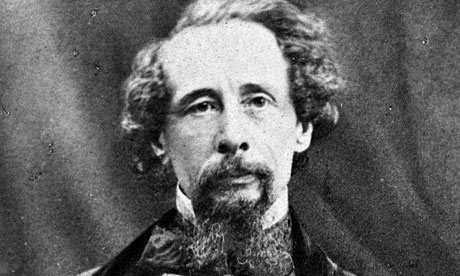Each week, culture intern Katherine will scour great works of literature for all the cheesy details your English teacher never showed you. Authors often include mentions of food and drink in their written works to give the reader a small glimpse into the culture and historic foodways of a particular place and era. This blog series will lend readers a helping hand and shed some light on the cheeses between the lines of the literary greats. Also, each week you’ll have a chance to win a special issue of culturemagazine. Congratulations to last week’s winner, who suggested pairing Pinot Noix with Uniekaas Reserve!
Considered the greatest novelist of the Victorian Period, Charles Dickens penned over fifteen novels, hundreds of short stories, and numerous non-fiction accounts of his travels and opinions. Like many other authors, Dickens used his surroundings and the complexities of British society as a detailed foundation for his literary works. Unlike most great authors, Dickens manages to mention cheese in some form or fashion in nearly all of his literary works, and if you ask us that makes him, well, grate.

Photo by Getty Images
So tie that cravat, dust off your top hat, and mind your Victorian manners as we explore the cheese-filled works of Charles Dickens… Dickens used cheese – along with many other traditional English foodstuffs – in various ways throughout his writings, ranging from simple culinary details to descriptive character and setting related metaphors.
Photo by The Telegraph
He used cheese to explain the surroundings…such as the,
“sharp corner by the cheese-monger’s shop”
Or one character’s disorganized kitchen in Great Expectations,
“cheese in the coalscuttle”
He used cheese to describe English culinary traditions…such as the classic dish known as,
“cheese and celery”
And he often mentions characters who,
“toast the cheese”
To create the classic fireside snack better known as Welsh Rarebit.
And sometimes Dickens employs cheese to make a point we modern readers can’t quite understand like the
“rotten old ecclesiastical cheese”
mentioned in David Copperfield.
But perhaps the most memorable cheese quote is a quick line from Dicken’s literary classic, A Christmas Carol,
“‘Because,’ said Scrooge, ‘a little thing affects them. A slight disorder of the stomach makes them cheats. You may be an undigested bit of beef, a blot of mustard, a crumb of cheese, a fragment of an underdone potato. There’s more of gravy than of grave about you, whatever you are!’”

Photo by the History Kitchen
Sometimes Dickens wrote about real-world cheeses, a few of which he discovered during his travels throughout Europe and further abroad. One such cheese appears in his novel Little Dorrit. Set in a debtors’ prison, this novel explores the complex rift between the prison detainees, who come from very different social spheres. The prison warden explains that,
“‘You get husky bread and sour drink by it; and he gets sausage of Lyons, veal in savory jelly, white bread, strachino cheese, and good wine by it.’”
Despite being locked away in a debtor’s prison, the socially connected prisoner stays well-fed thanks to his friends who bring him all the luxuries of an elite table including imported meats, condiments, baked goods, and, most importantly, fancy strachino cheese. This term is a generic name for several soft, strong cow’s milk cheeses pastured in various Alpine regions such as Lombardy, Piedmont, and Veneto.

Photo by the History Kitchen
In other works, Dickens refers to other popular cheeses of the time, such as Dutch cheese – a small, skim milk cheese made on the Continent – and traditional English Cheshire – a hard, crumbly cheese with a yellowish hue and one of the oldest cheeses in British history.

Photo by My Supermarket UK
A veritable wordsmith, Dickens could use the mere concept of cheese to illustrate a point about a place or character. For example, in his novel Dombey and Son, Dickens uses cheese to describe the character of Major Joseph Bagstock, a self-possessed retired army major,
“with his complexion like a Stilton cheese, and his eyes like a prawn’s.”
While Stilton – a traditional veiny blue cheese from the counties of Derbyshire, Leicestershire, and Nottinghamshire – is delightfully delicious, being compared to a wedge of it is never good thing. In his more famous novel, Bleak House, Dickens similarly compares the character of Sir Leicester Dedlock, another old crotchety aristocrat, to cheese…
“The sea has no appreciation of great men, but knocks them about like the small fry. It is habitually hard upon Sir Leicester, whose countenance it greenly mottles in the manner of sage-cheese, and in whose aristocratic system it effects a dismal revolution.”
In this particular insult, Dickens probably refers to Sage Derby, a semi-firm cheese with a mottled green color and herbal sage flavor. The deep green hue is achieved by mixing sage leaves into the fresh curd before pressing and aging. Again, not a compliment.

Photo by the History Kitchen
So the moral of the story (a consistent feature of any Dickens plot) is to stay on Dickens’ good side, or else he’ll compare your features to some moldy cheese. At least he made good use of all those delicious English cheeses.




